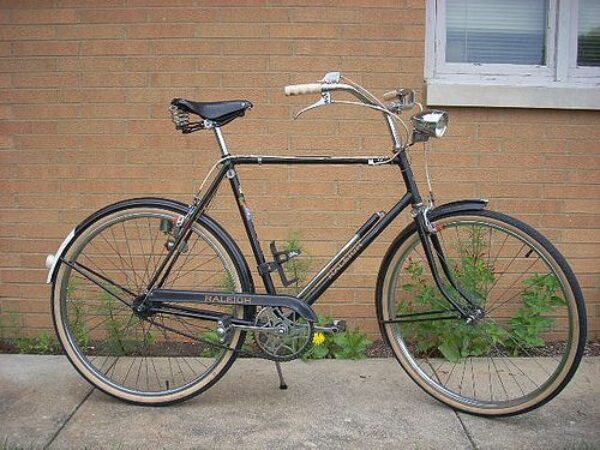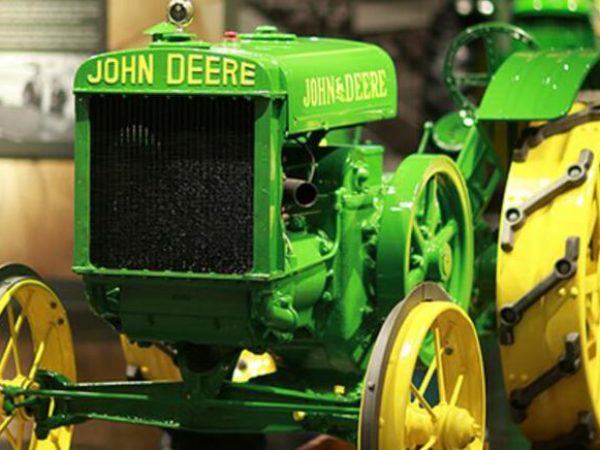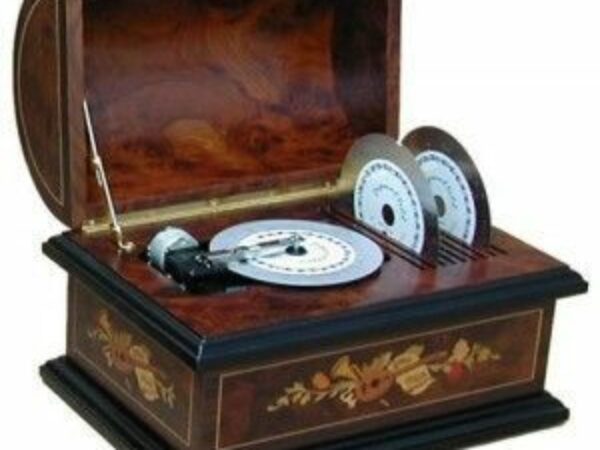Last weekend, when I searched for my old watch, which was gifted by my mom, I found something incredible – old playing cards. They were not mine nor my father’s, and I was confused. Upon showing them to my mother, I knew they were my grandfather’s.
My grandfather loved playing cards with his friends, which was his favorite hobby. But after seeing those cards, one question came to my mind: how can someone identify and learn about the value of vintage playing cards?
To answer this question, I did extensive research on these cards. Fortunately, I got my answer! If you have a similar question on your mind, I am here to help you.
In this article, I will guide you through the identification and value of vintage playing cards.
Table of Contents
Vintage Playing Cards – A Brief History:
Before learning about its identification and value, you need to know the history of vintage playing cards. Historians believe these cards were invented in ancient China in the 9th century. It was during the Tang Dynasty (618-907).
Su E, a Tang Dynasty writer, gave the first card game reference. He mentioned this as a “leaf game” to the daughter of Emperor Yizong of Tang, Princess Tongchang, in 868. Ouyang Xiu, a scholar of the Song Dynasty (960-1279), believed that this game was started in the mid-Tang Dynasty.
Moreover, he also mentioned that they used pages and sheets instead of paper rolls to write on. Also, a tang-era woman was the first to write a book, Yezi Gexi, on cards. In the Ming Dynasty (1368-1644), people started to use many of the novel’s characters on playing cards.
Eventually, in the 11th century, cards were widely used throughout the Asian continent. The playing cards in ancient Chinese had four suits, including coins, strings of coins, myriads, and tens of myriads.
In Europe, these cards arrived in the late 14th century, and it is believed that they came from Mamluk, Egypt. Their suits were the same as the tarot suits of Cups, Swords, Coins, and Staves, and traditional Spanish, Italian, and Portuguese decks were still using them. In Bern, Switzerland, in 1367, there was documentary evidence of the ban on playing cards.
In Topkapi, Istanbul, in 1939, Leo Mayer discovered a complete pack of Mamluk playing cards that linked back to the 12th or 13th century. They identified it with the help of a fragment used to make it.
Also, the cards represented the Indian gods. The Indian cards were different from other sets of cards. For example, they were hand-painted, round in shape, and had more than four suits. The earliest cards were hand-designed. There were also printed woodcut decks, and people started to use them around the 15th century.
The new printmaking technique was introduced around the 1430s. However, engraved cards were not affordable, and only high-class people used them then. Also, there were a few engravers who could make cards.
During the 15th century in Europe, people represented European Kings, Queens, Knaves, and Chevaliers in the cards. The four suits originated in France in 1480, and they are still in use in today’s world. They are clubs, spades, diamonds, and hearts.
In 1765, printing a tax stamp on one of the cards became mandatory. In the 1800s, playing cards, jokers started to appear on them.
Vintage Playing Cards Identification:
Various playing cards are available on the market today. However, only the old-style playing cards are valuable. In this article, I mentioned the top vintage cards and their value. Before diving into the details, let’s have a look at their value chart:
Types of Vintage Playing Cards:
The first thing that affects the value and pricing of vintage playing cards is the type of these cards. Below are the most famous types of vintage playing cards:
Engraved and Woodcut Playing Cards
This type of vintage playing card was common in the 15th century. Professional card markets started to manufacture printed decks in the early 1400s. Moreover, another technique that was popular at that time was engraving.
The engraving was not affordable then, whereas woodcuts were more cost-effective. This is why woodcuts were so famous at that time. However, these types cannot be easily found in today’s era.
Antique Playing Cards with Plain Backs:
Playing cards had plain backs until the late 19th century. The front part of each card had numbers and images on it. Moreover, card makers also did hand painting and gilt designing on the cards.
On the front side of the playing cards were primarily images of famous people, including Shakespeare and Joan of Arc.
Modern Designs:
This type of card came in around the 1800s. The playing card makers started to print small numbers and reversed images on the cards. In addition to this, bicycle cards gained popularity around the 1870s. With this design, card makers made many deck designs.
Tourist Playing Cards:
Various companies started to produce tourist playing cards in the late 19th and early 20th centuries. Different tourist locations were printed on the cards. Furthermore, location logos, including hotels, railroads, and airlines, were on those cards.
Similarly, alterations of the vintage cards mentioned above include:
1. Russian Style Playing Cards:
Russian Style Playing cards were produced in Imperial Russia at the beginning of the 17th century. Nevertheless, they were banned, and the restrictions on the cards were lifted in 1819.
Russian cards are still prevalent in countries where Russians live. This design was influenced by French and German card decks. Russian cards were divided into three types based on their printing and paper quality.
However, Adolf Charlemagne, one of the most famous painters in Russia, made a new design in 1862. That design became popular in Russia. A copy of this card is now available for $19.99.
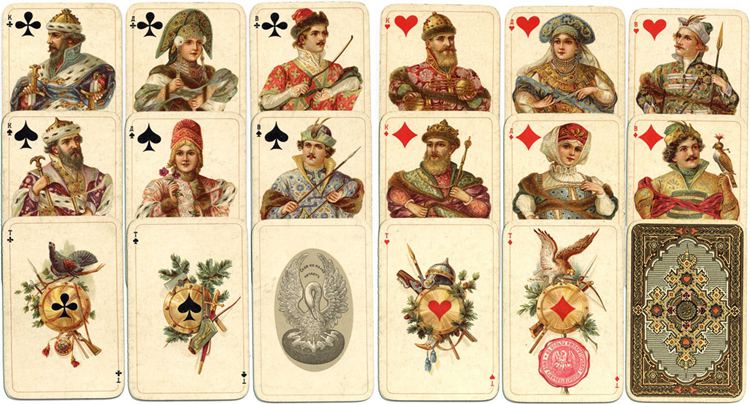
2. El Dorado Playing Cards
These playing cards first originated in the late 1800s. The El Dorado cards are now part of the 2022 Vintage Reimagined Series. Their design is inspired by the old El Dorado cards while giving them a new artistic touch.
Jackson Robinson has designed the new El Dorado cards, produced by King Wild Project. Moreover, these cards are printed by the United States Playing Card Company in the US. They emphasize following the old design of this card. This playing card costs $49.99.
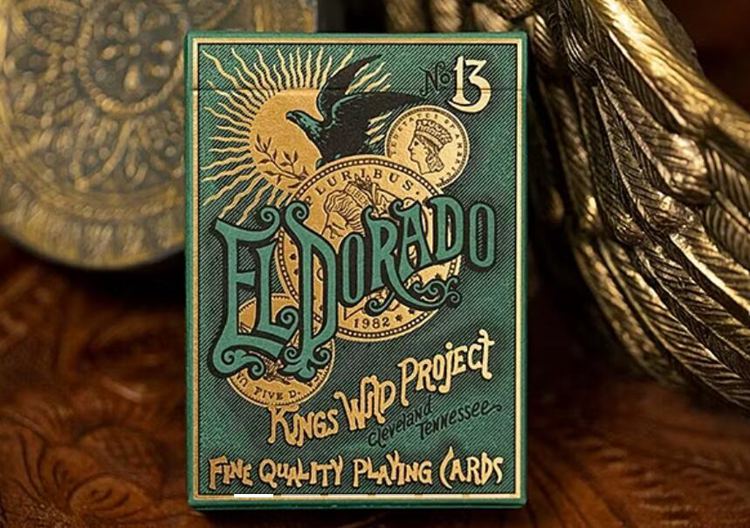
3. Cotta’s Almanac Playing Cards
The first Cotta playing cards came in 1805, the most famous of all the Cotta playing cards. The card makers designed the cards by hand, working with images. Moreover, they engraved copper plates on the cards, and the stuff they used was linen period stock.
At that time, the shape was different too. The cards had squared corners, and their backs were plain. Cotta’s Almanac playing cards gained a lot of popularity, and they became a model for other publishers to make similar transformation decks.
People also used these playing cards for many purposes. For instance, the nobility used these cards for leaving messages for someone or as visiting cards because of their plain back. Furthermore, the cards had the main character of Joan of Arc, who was represented by the Queen of Spades.
Apart from this, other court card illustrations had figures inspired by one of Schiller’s plays. They also had the French words for Queen, Jack, and King.
Cotta’s Almanac playing cards are now reproduced, and Azured Ox designed them. In addition, Will Roya is the producer of these cards. They are now available for $11.99.
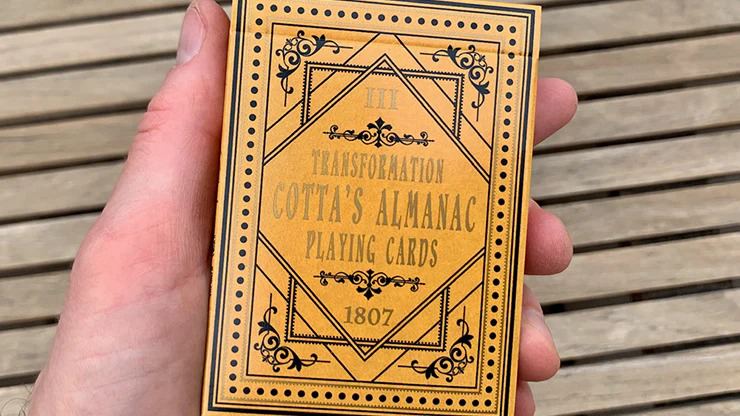
4. Folk Cards of Destiny
People believed in oracles, destinies, and divination in the old days. These things were conducted using playing cards, and the particular card could decide their fortune (as per their beliefs). Therefore, one can understand the value of the folk cards of destiny.
The card readers used to read the Folk Cards of Destiny to tell people about their fortune. The designer of this card is Dondorf, a well-known printer of the 18th century. It is one of those decks that has a sense of imagination and aesthetics attached to it. Folk cards of destiny are now available at $18.99.

5. Robin Hood Playing Cards
The Robin Hood playing cards are inspired by a French tapestry (1066) named the Bayeux Tapestry. Jackson Robinson has designed its beautiful appearance while keeping its exceptional artistic style in his mind. Moreover, the designer made every stitch with his hands, which can easily be seen if you look at the cards closely.
He has also designed the card case and made it look like an old book. The design also depicted jokers from Robin Hood. These cards are priced at $19.99.
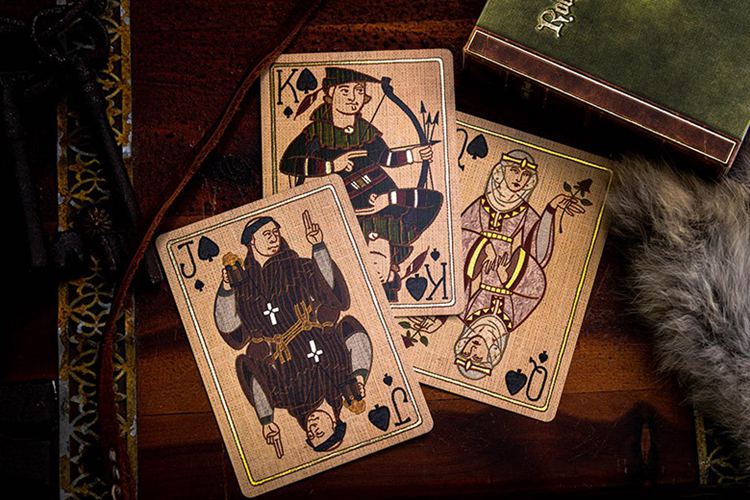
6. Arthurian Holy Grail Playing Cards EPCC
The Arthurian Holy Grail playing cards are hand-made cards depicting the story of King Arthur and the people who were associated with his legend. These cards were inspired by the design of a book named The Book of Kells. It was believed that this book was written in the time of King Arthur.
The designer of this card is Jackson, who picked up the popular design of medieval times and added other aesthetic features to the cards. Moreover, he has made each card with exceptional artwork while keeping the old structure in mind.
Apart from this, Arthurian cards have texture and vibrant colored foils. He has also illustrated the beautiful legend theme on the card deck. You can buy these cards for $12.95.
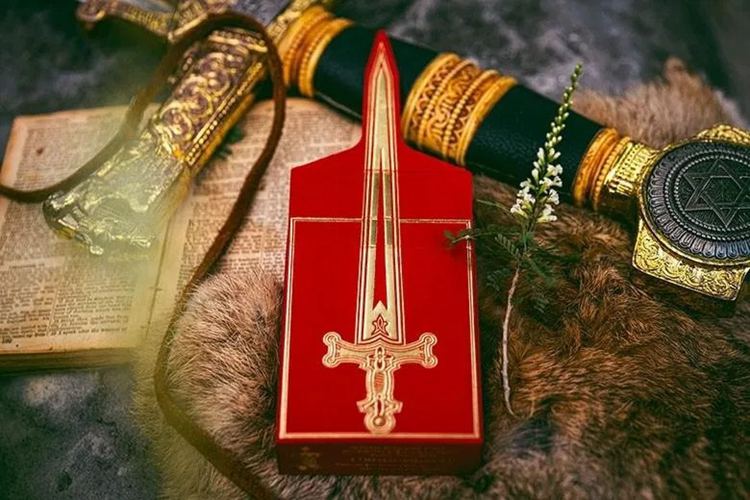
7. Rider-Waite Tarot Deck (USGS)
These cards have illustrations of the Rider-Waite Tarot images. This deck was so popular in the past because all of its cards illustrate symbols and figures with the complete scenario. Before this deck, all other cards had suit signs, including wands, coins, cups, and pentacles.
In the Rider-Waite Tarot Deck, it is easier for the viewer to see the images and allow his mind to work on them rather than depend on the card’s text.
Aeclectic Tarot mentioned these cards as one of all-time’s top ten tarot decks. You can get these cards for $22.99.
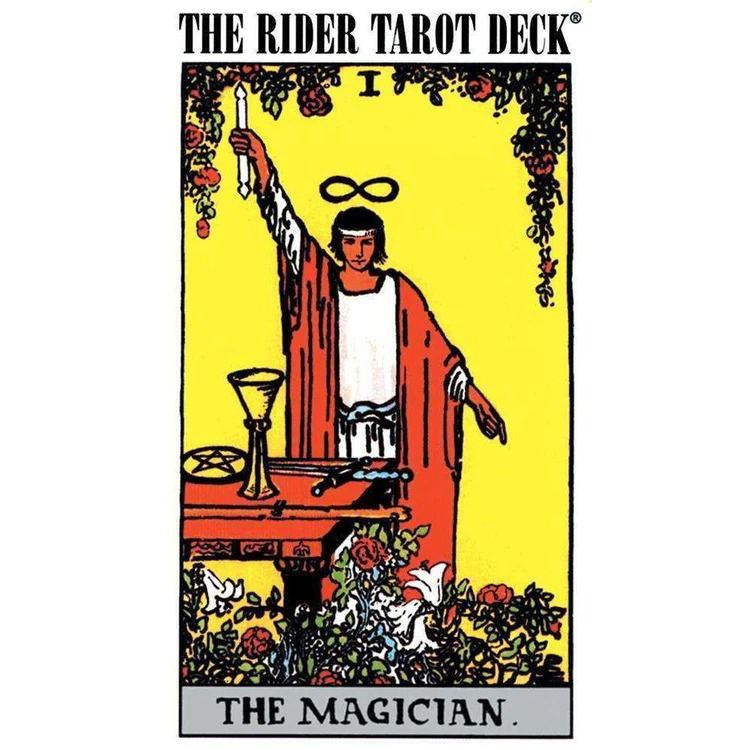
8. The Dead Man’s Deck “Unharmed” Playing Cards
Vanishing Inc. was the first one to release the Dead Man’s Deck. Immediately after their release, these cards became the most valuable cards of the time. People started to buy them one after another.
One of the primary reasons for their popularity is their exceptional design and unique features. The Dead Man’s deck was inspired by a man, Wild Bill Hickock’s story. In the late 1800s, when this man was playing a poker game, he was shot dead.
At that time, this deck came with a bullet hole. However, people wanted it to be bulletless. Therefore, the company Vanishing Inc. made these cards without the bullet hole. Thus, they named it “The Dead Man’s Deck Unharmed Playing Cards.”
They have maintained the quality of the original card. Also, Cartamundi is the manufacturer of this deck. You can purchase these cards for $15.99.
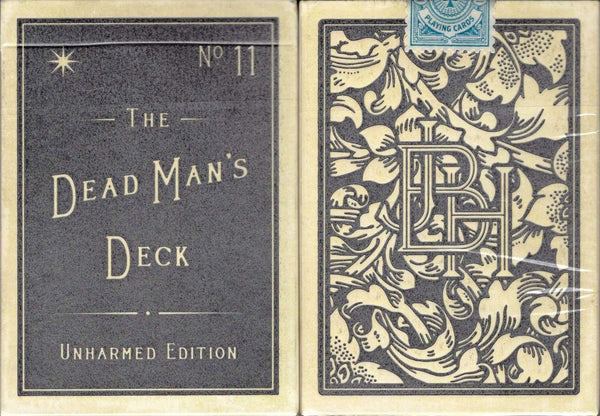
9. Playing Marseille Playing Cards & Tarot Deck
Playing Marseille The playing cards and tarot deck maintain the old legacy of connecting the classic Tarot de Marseille with French-suited playing cards. They illustrate the tarot’s roots like a card game.
These cards do not have esoteric symbolism. They have a more fun-loving approach and only focus on simple methods. This deck lets you quickly learn the practical system of Ryan Edward’s fortune telling. Furthermore, you can also use them with the Marseille tarot deck, as they will be more enjoyable.
According to the creator of the Lenormand deck, Ryan Edward, tarot cards are the most original form of playing cards. These cards are available for $22.99.
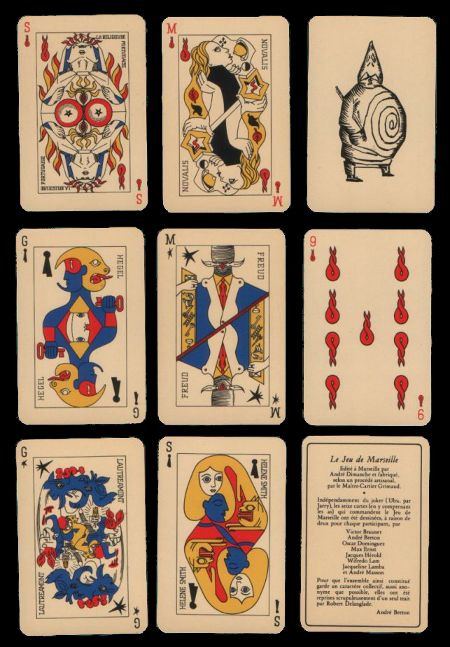
10. Gemini Casino, 1975 Playing Cards
Gemini Casino’s 1975 playing cards are inspired by iconic cards. For example, Dunes Casino and Jerry’s Nugget cards. These cards were made while keeping the vintage Vegas casino design in mind. They are top-quality casino-style decks.
The designer of Gemini casino playing cards is Toomas Pintson. Apart from this, these cards have light blue color on the tuck case and on the card backs. Also, the deck illustrates the Jokers and Ace of Spades. The card maker’s stock for these cards is soft-crushed by the UPCC. You can buy these cards for $19.99.
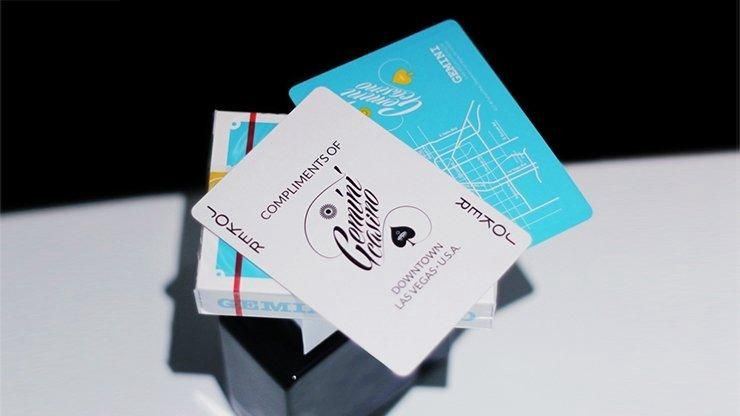
Vintage Playing Card Value and Price Guide:
Did you recently find a pack of vintage playing cards and want to know their value and pricing? You are at the right place. This section will discuss the value and pricing of commonly known vintage playing cards.
In regards to the cards mentioned, a general outlook of the value is:
No |
Name |
Designed by |
Produced Year |
Current price |
1 |
Russian Style Playing Cards |
Adolf Charlemagne |
1862 |
$19.99 |
2 |
El Dorado Playing Cards |
Jackson Robinson |
2022 |
$49.99 |
3 |
Cotta’s Almanac Playing Cards |
Azured Ox |
2020 |
$39.99 |
4 |
Folk Cards of Destiny |
Dondorf |
1800s |
$18.99 |
5 |
Robin Hood Playing Cards |
Jackson Robinson |
2021 |
$19.99 |
6 |
Arthurian Holy Grail Playing Cards EPCC |
Jackson Robinson |
Most probably 2017 |
$19.99 |
7 |
Rider-Waite Tarot Deck (USGS) |
Pamela Colman Smith |
1909 |
$21.99 |
8 |
The Dead Man’s Deck “Unharmed” Playing Cards |
Cartamundi |
2021 |
$15.99 |
9 |
Playing Marseille Playing Cards & Tarot Deck |
Paul Marteau |
1970 |
$22.99 |
10 |
Gemini Casino 1975 Paying Cards |
Toomas Pintson |
2020 |
$19.99 |
Other than that, the value of any pack of vintage cards depends on various factors, including the type of card, its condition, etc. We will discuss everything in depth.
The Theme of the Playing Cards
The theme is the first thing that affects the value and pricing of the old playing card. Many card collectors love to collect a specific theme of cards. For instance, the theme could be World War 1 or 2, horses, breweries, airlines, dogs, and many more.
Therefore, if someone is searching for the theme of cards you have, it might be valuable to them. Also, this thing varies from person to person.
The Age of Vintage Playing Cards
The proverb “Old is Gold” applies here. It means that the value and price of the product will depend on how old it is. This is because old playing cards are rare in today’s era, and not everyone has them.
Moreover, it has more value because of its beautiful art and hand painting, as this thing can not be seen now.
The Condition of Vintage Playing Cards
The condition of the cards also matters a lot. If the cards have creases, marks, or are bent, the Playing cards’ value would be decreased.
The Completeness of Cards
Every vintage card has some value. Even a single card has a significant amount of value. However, if you have a complete deck, it will have more value.
Conclusion:
Every vintage playing card is valuable. If you have any one of the old playing cards, you should keep them with you. However, the pricing and value vary with the cards and their origin. In today’s world, old playing cards are much rarer. Therefore, many companies have come up with redesigning old cards while keeping the original design in mind.
This idea has helped many card players to get their favorite design that will give them a vintage vibe. In this article, we have discussed ten of the vintage card designs that are now available around the world. You can also search for a website that sells vintage cards.
You can check this guide before purchasing any old deck. Also, suppose you have vintage playing cards and want to know their value. In that case, learning about their types, conditions, themes, age, and completeness is essential.


